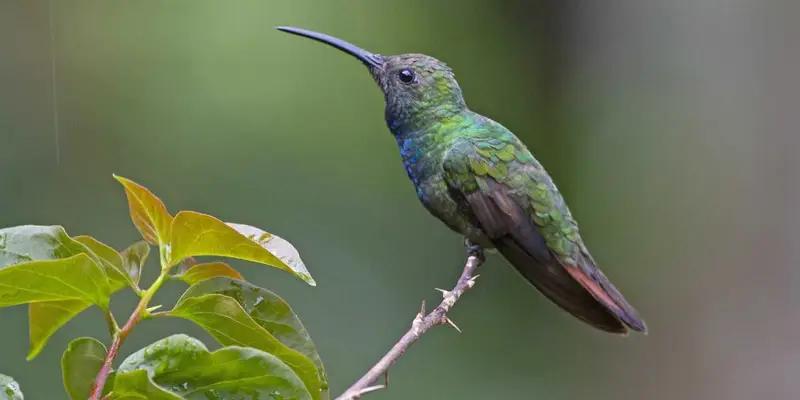
Hummingbirds are a beautiful tiny species of bird, nine of these species can be found in North Carolina.
These hummingbird species are: Green-Breasted Mango
- Ruby-throated Hummingbird
- Black-chinned Hummingbird
- Anna’s Hummingbird
- Rufous Hummingbird
- Allen’s Hummingbird
- Calliope Hummingbird
- Broad-billed Hummingbird
- Broad-bellied Hummingbird
Want to learn more? Take a look at the Compete Hummingbird Guide Book – a classic!
The Ruby-throated Hummingbird is the most common hummingbird in North Carolina and is the most likely species to breed in the eastern state.
The state of North Carolina is classified as having a subtropical climate with often very humid weather. There are currently 41 state park areas in North Caroline and there are 10 national park areas.
There is a popular trail for bird watching, aptly named the NC Birding Trail and this appears to be the most likely and the most popular place for seeing hummingbirds.
Now that we’ve discussed where best to see these hummingbirds, let’s take a look at these nine unique species in detail.
There are also some tips on how you can try and bring them to your garden.
Take a look at our article on the Best Hummingbird Feeder!
What Hummingbirds can be seen in North Carolina?
Table of Contents
1. Ruby-throated Hummingbird
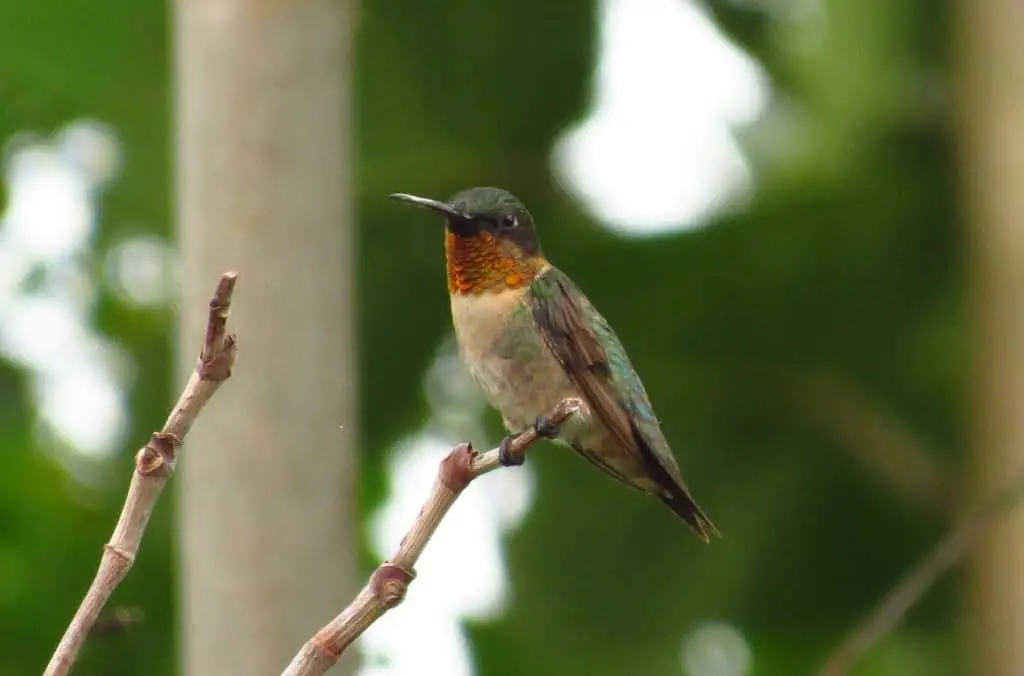
Fun Facts:
- These hummingbirds feed on nectar, particularly the nectar of both orange and red tubular plants such as honeysuckle.
- These birds are tiny and only weigh 2-6g with their wingspan being 8-11cm.
The males of this species are identifiable by the red feathered throats. The females do not have this ruby colouring and their necks and bellies are all white.
You are most likely to see this bird in open areas of land, such as in meadows or orchards.
Males will court any female that enters their territory by performing a courting display that involves aerial dives of up to 50ft.
If the female is impressed she will move further in the territory and the male will proceed to perform smaller dives closer to her. Females are the ones who build the nests for the brood.
This is the most common species of hummingbird and you can see them across the whole state of North Carolina.
They are most abundant in the state during their breeding seasons. These birds are big fans of tubular plants so having these in your garden will increase your chances of a visitor.
2. Black-chinned Hummingbird
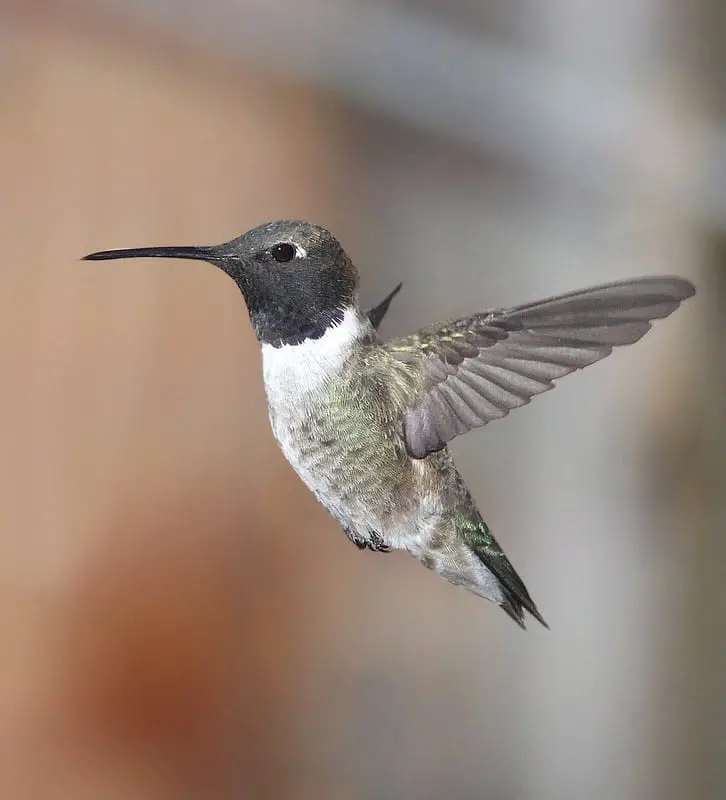
Fun Facts:
- They most commonly consume nectar from flowers but will also eat insects when they are more readily available.
- These birds are very small with a weight range of 2.3-4.9g and have an average wingspan of 11cm.
As the name suggests, the males of this species have black and purple feathered necks whilst both sexes have white bellies.
They like to stay in areas close to rivers and spend their time on high up perches observing their territory and performing courting displays when a female approaches.
This species of hummingbird is not as well studied compared to others so not a lot is known about their behaviours.
That being said, the male’s courtship dives have been observed reaching heights and drops of up to 100ft.
Whilst this bird is not common in North Carolina, there have been several different sightings of it. These sightings tend to be along the coastline and in their migratory season.
These birds are used to using manmade feeders so all you will need for a chance to attract one of these birds is a proper sugar water feeder. Tubular plants will also increase your chances.
3. Anna’s Hummingbird
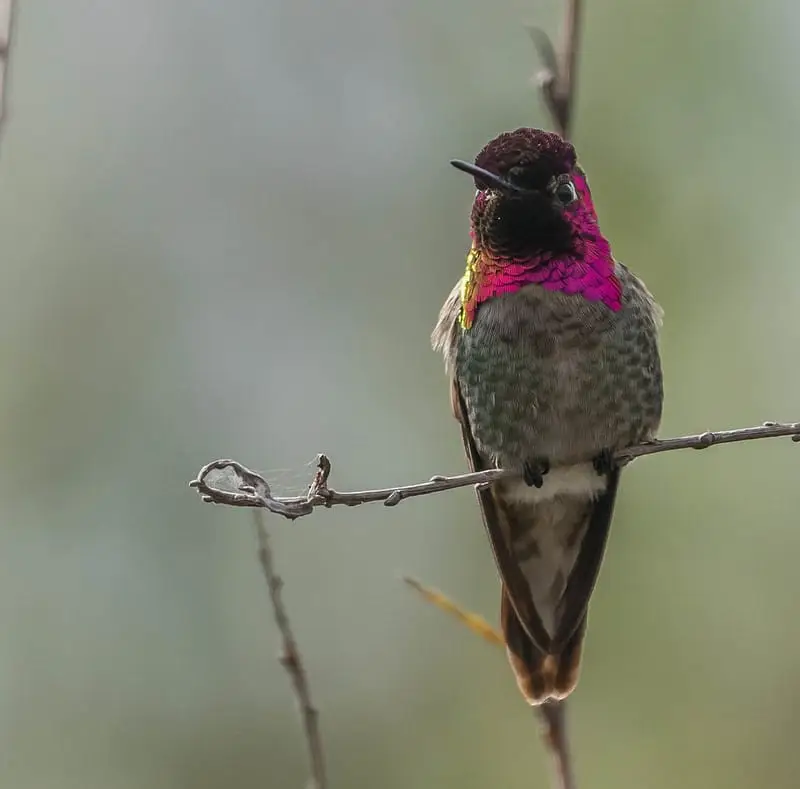
Fun Facts:
- These birds will eat nectar from many different flower species and they have also been known to steal insects from spider webs.
- These birds are medium sized for a hummingbird, weighing 3.6g.
The males of this species are known for their distinct iridescent pink feathers that cover their neck.
Both sexes have backs covered in green and grey feathers. These birds do not form breeding pairs and mate with multiple individuals from their species.
The males will court the females by performing aerial flights and singing as they do so.
You are likely to catch one of these birds in more urban areas. The females build the nests and raise their young on their own.
There have been sightings of this bird across the North Carolina state, mostly in the south east of the state. These sightings seem to mostly be outside of the breeding season.
These birds are used to urban habitats so they are perfectly happy to use hummingbird feeders so all you’ll need is one of these to hopefully attract this bird to your garden.
4. Rufous Hummingbirds
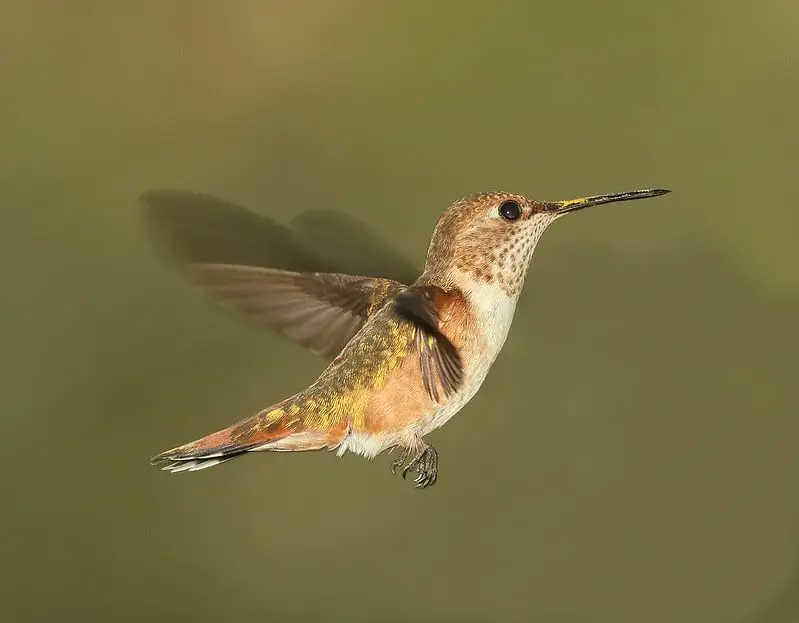
Fun Facts:
- Nectar from tubular plants is the main source of food for this bird.
- These birds are average sized for a hummingbird and weigh 2-5g.
The Rufous Hummingbird has striking autumn colours, with different orange and brown shades of feathers.
However, the females are mostly coloured with feathers of a duller green. These birds are extremely aggressive towards other hummingbirds, particularly when it comes to food.
Males have been seen chasing females away from food spots, even during the middle of the mating seasons.
These birds are solitary and do not form breeding pairs. Males will mate with multiple females if they have the opportunity to do so.
These birds are only seen in North Carolina outside of their breeding seasons and even then they are not very common, only being seen in the southern areas of the state.
Whilst they are not the most common, these birds are big fans of gardens and will visit any bird feeders they can.
But be warned, they will fight off any other hummingbird visitors that you may have.
5. Allen’s Hummingbird
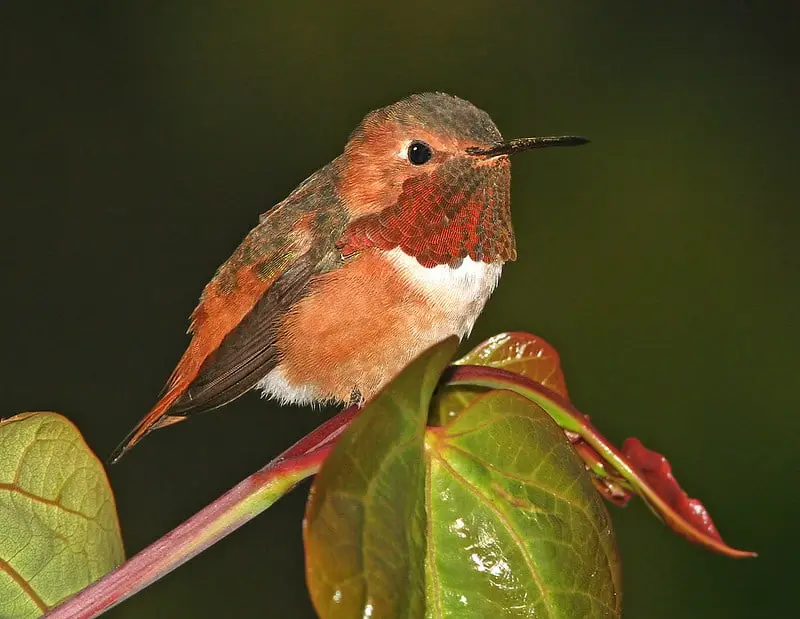
Fun Facts:
- A lot of this bird’s diet comes from nectar, but they will also eat small amounts of insects.
- They are similar in size to a lot of other hummingbirds, weighing 2-4g.
Both sexes of this bird are covered in coppery coloured feathers when they reach adulthood, but the female’s feathers are usually much duller in colour. These birds like to stay in open areas of land, close to coastal areas if possible.
Males choose a single perch which they will perform all of their courting displays for females on top of.
These birds are not monogamous and do not form any breeding pairs. Females raise the young on their own, as is the common way of hummingbirds.
These birds are not very common and have only been seen in North Carolina during their migration period. They have only been seen and recorded at the far east of the state.
These birds are most likely to visit your garden in winter so make sure that you have an appropriate sugar water feeder set up that is changed every few days for freshness.
6. Calliope Hummingbird
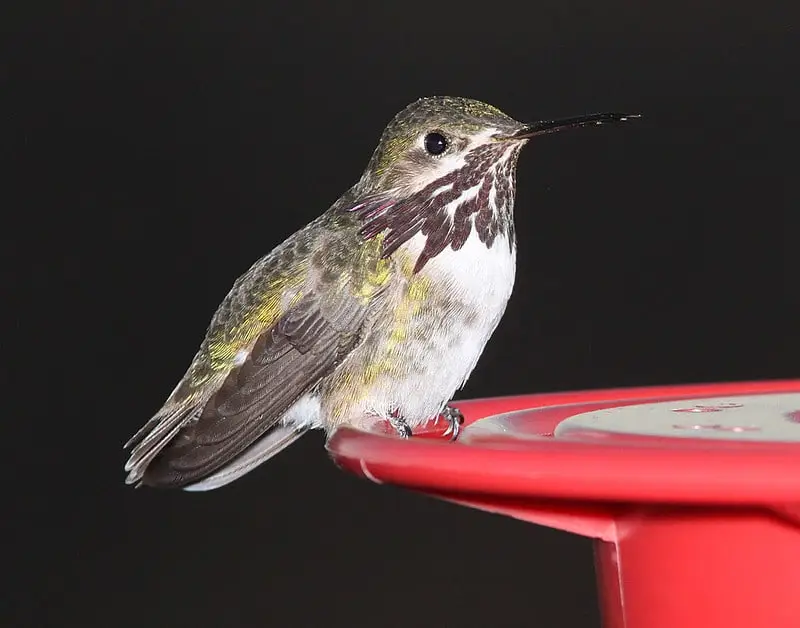
Fun Facts:
- These birds will consume nectar as their main food, usually from cupped flowers.
- Calliope Hummingbirds are on the smaller side only weighing 2.4-3.3g.
Both sexes of this species have bright white bellies, but males have scattered purple feathers across their plumage.
Males spend a lot of time observing and defending their territory from high up and they are most likely to be seen in open areas of land such as meadows.
They have a distinct courting display which involves flapping their wings at such a rapid rate that it produces a sound like a buzzing bee.
These birds do not form breeding pairs and it is believed that the males will mate with multiple individuals.
These birds are rare in North Carolina but have been seen across the eastern coastlines of the state. These sightings have only occurred outside of the breeding season.
These birds prefer country areas so they are less likely to visit your garden. That being said, they have been seen using sugar water feeders before so if you are lucky you may spot one.
7. Broad-billed Hummingbird
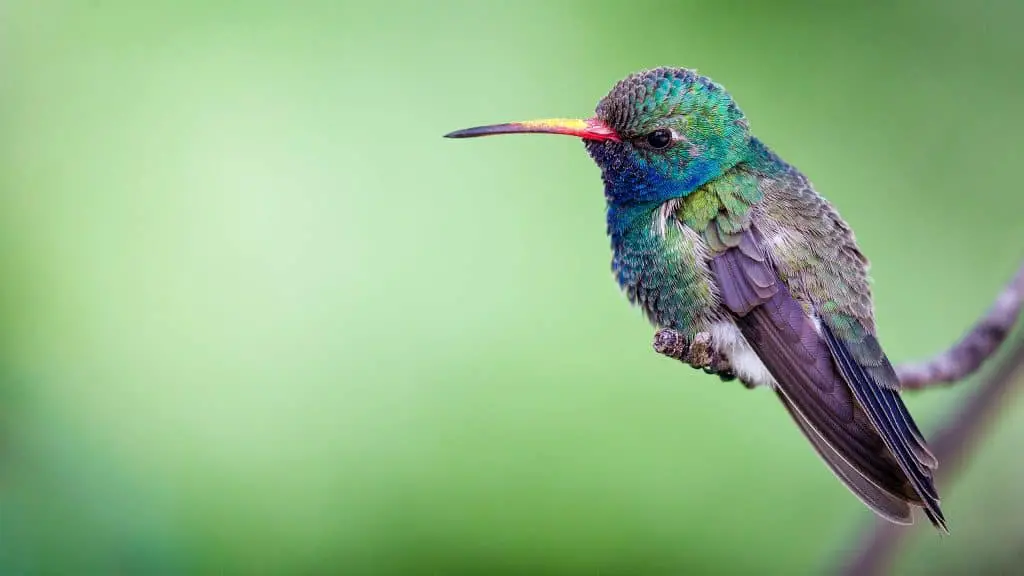
Fun Facts:
- Nectar is the primary food source for these birds but they will also eat insects that they find on plants.
- These birds are average for a hummingbird and have a weight range of 3-4g.
As the name suggests, these birds have broad bills. These bills are also bright reed in colour. Males of this species are covered in bright blue and bright green feathers whilst the females are covered in duller shades.
They will usually make their territory in open areas such as meadows or canyons. Males will spend their time on high perches, observing their territory and foraging for food.
A male will only perform his courting ritual when a female has answered his call and entered his territory.
There have also been recorded instances of males performing their courtship displays to other males, but this has not been widely studied and is currently believed to act as a warning display.
There have only been very few recorded sightings of this bird in North Carolina. These sightings seem to have only been observed outside of the breeding season and primarily to the far south of the state.
They are not frequent garden visitors as they prefer to stay in open country areas rather than urban areas.
Adding brightly coloured tubular and cupped flowers to your garden will increase your chances of a visitor, however.
8. Buff-bellied Hummingbird
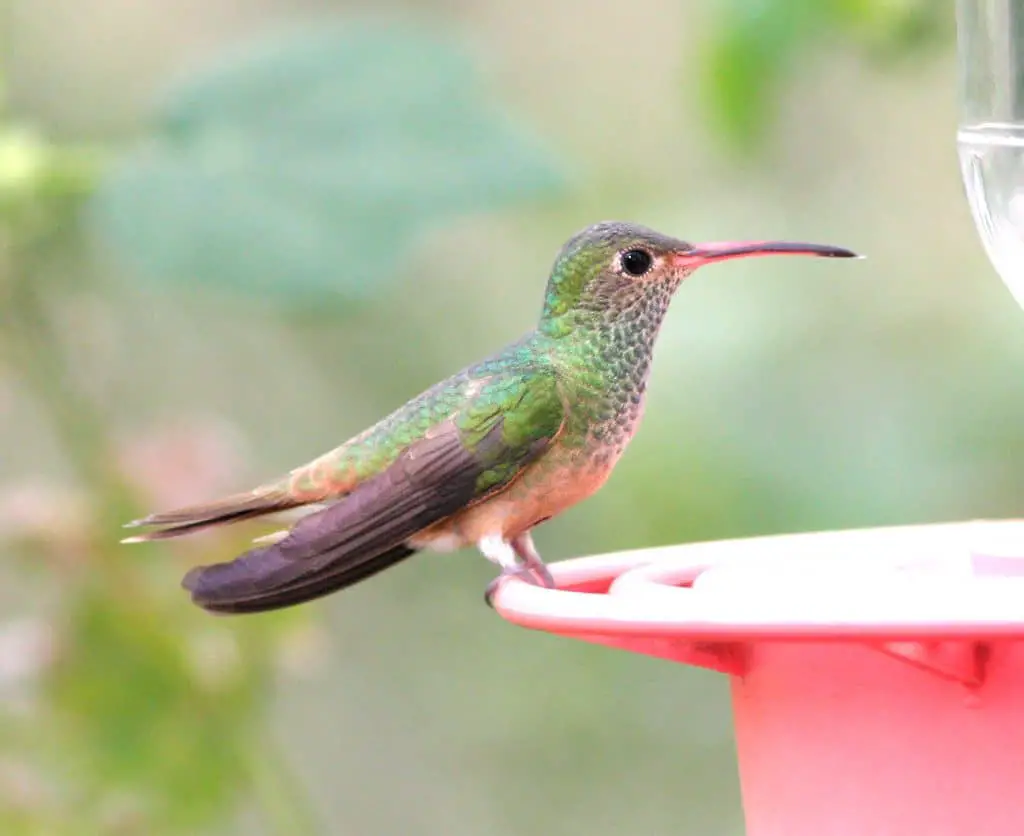
Fun Facts:
- The only thing known about their diet is that they consume nectar.
- These birds are average sized for hummingbirds and weigh between 2 and 4g. We do not know their average wing span.
Not much is known about this species, but they are identifiable by their dark green plumage and long red bills.
They have most commonly been spotted in open areas of woodlands and have been observed to be rather aggressive around food sources.
Their courting displays and breeding behaviours have not been well studied but it is known that they are not monogamous.
Much like other hummingbirds they mate with several individuals and do not form breeding pairs. The females appear to take care of the young on their own.
They do not have a very widely known range but have been seen to the south east of the state at several different times during the year.
It is assumed that it is only in the state outside of its breeding seasons but this has not been confirmed.
These birds are extremely rare to find in your garden and there are not many specifics on how to attract them.
Your best bet is to have a sugar water feeder set up and add some brightly coloured flowers to your garden as well.
9. Green-breasted Mango
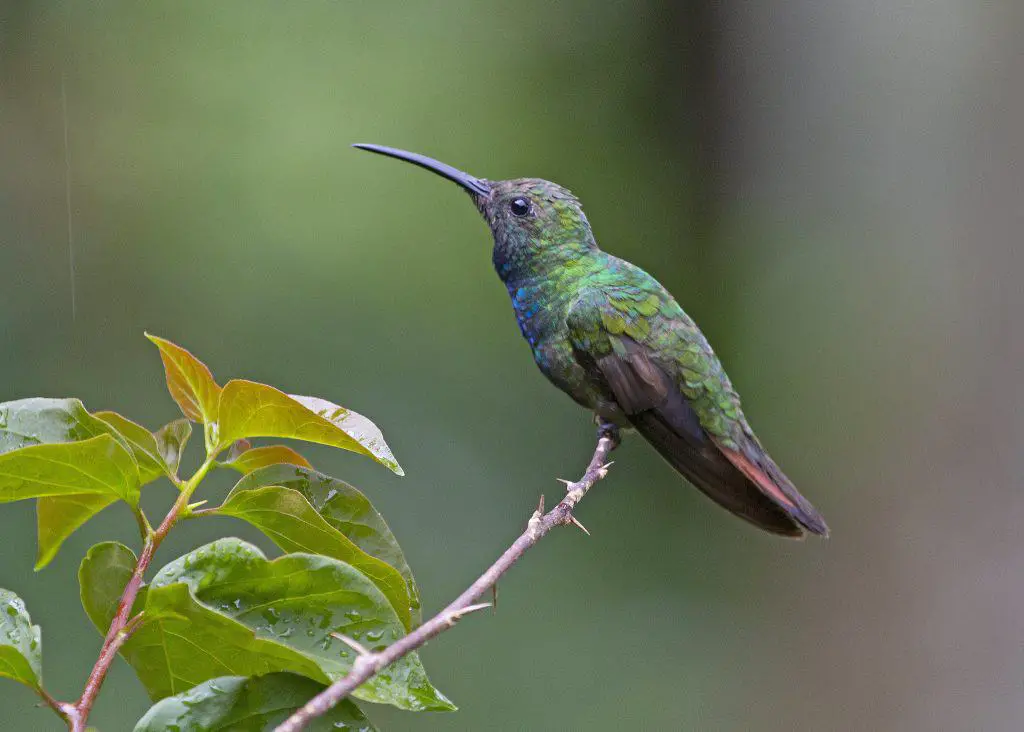
Fun Facts:
- These birds are on the larger side for a hummingbird, weighing an average of 7g.
- They primarily feed on nectar but will also eat insects.
The Green-Breasted Mango is known for its unique call which is a sharp sound described as a tsup noise.
They are identifiable by their bright green feathers, that are most prominent on the breasts of the males.
The females of this species have white and brown bellies. These birds like to spend their time sat on high up perches, observing their territory. You are most likely to see these birds in open areas of land.
Though this bird is most common in Mexico and is a rare visitor to the U.S, it has been seen on several occasions to the south of North Carolina. This seems to be outside of their breeding season.
These birds are easy to attract to your garden as they have become well adapted to using bird feeders. Make sure an appropriate sugar water feeder is set up for this hummingbird.

More Articles.
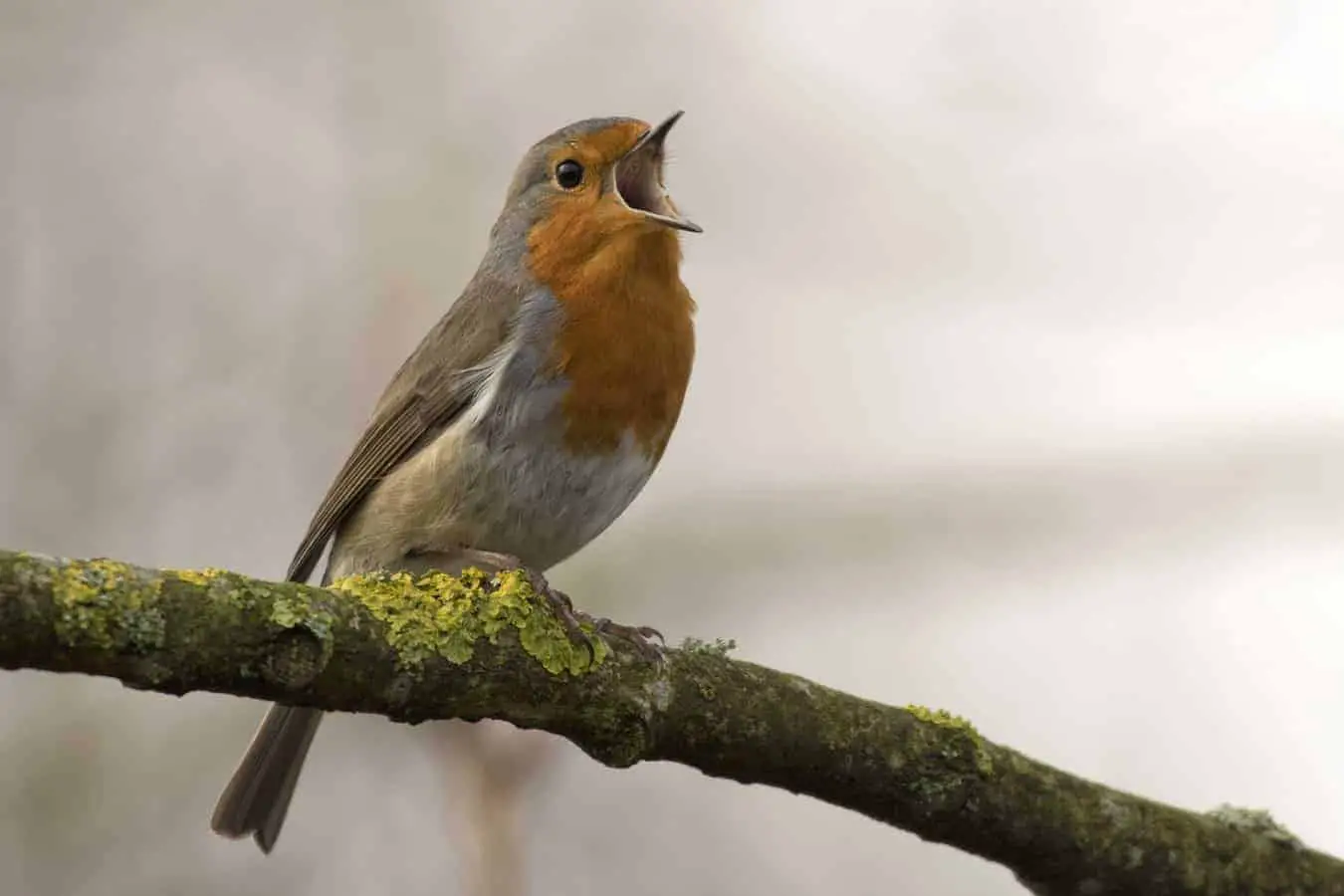
How to Attract Robins to your Yard?
Robins are known for being friendly and energetic birds that love to spend time hanging
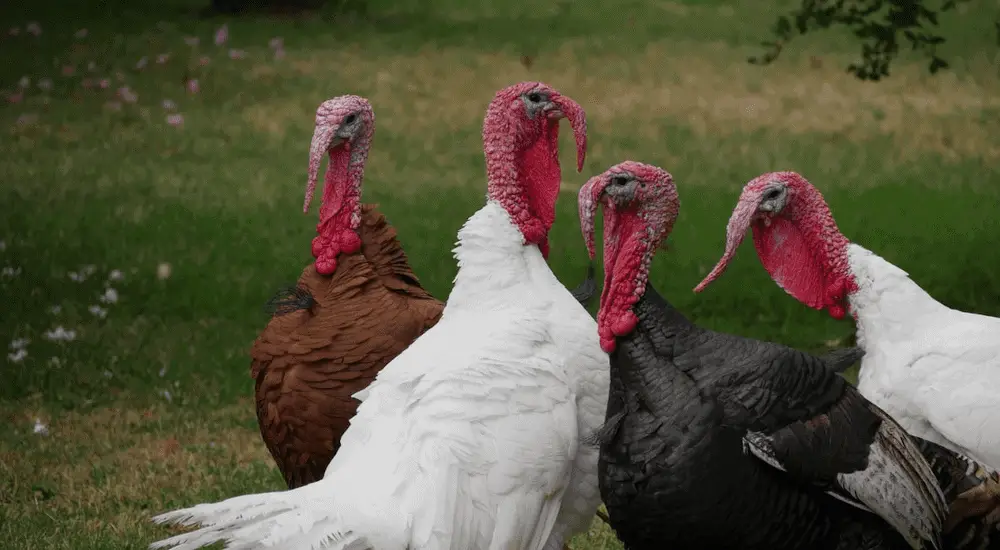
How to attract Wild Turkeys to your yard?
Wild turkeys can be provide quite a fascinating addition to your yard. Providing acorns in

How to attract Quail to your yard?
Attracting quails to your yard might be easier than you first anticipate. These naturally shy

About Us
We are avid bird-watchers who recently retired, allowing us more time to travel the world. Fortunately, we have managed to visit numerous countries around Europe, Asia, and America. Watching and photographing birds has been a passion for many years and we are making the most of the extra time on our hands!
